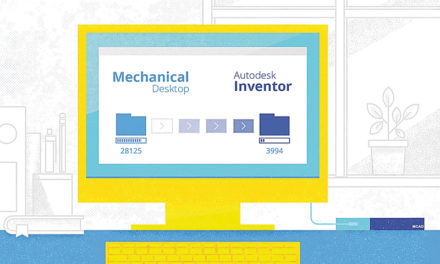
Not many people think of excavators, bulldozers and tractors as innovative products. However, the same foundational technologies powering drones and autonomous cars can be used to streamline heavy equipment development and provide more in-demand user features.
Smart engineering is driving change in all stages of these products’ lifecycles. Data captured throughout a machine’s use inform innovation that:
- Supports holistic simulation testing. As machine autonomy increases, the number of test scenarios grow exponentially. Physical test runs are impractical; virtual proving grounds ensure critical scenarios are repeatedly tested as designs improve.
- “Designs in” high-value services such as predictive maintenance, remote diagnostics and product customization. Smart engineering engages and traces both mechanical and software-driven features. This becomes especially important for optimal servicing.
- Automates tasks that previously required manual intervention. These upgrades make up for skills and expertise that novices lack and relieve fatigue among veteran operators. In addition, they help protect machinery by overriding manual commands to prevent accidental overloading or other damage.
- Feeds continuous improvement of existing and new products. Real-time global field data has a positive impact on design, engineering and manufacturing stages of product lifecycle management (PLM).
Lower costs, higher performance
The necessary components for smart machine capability are a digital simulation for the creation of a digital twin; sensors for testing and monitoring; Internet of Things (IoT) networking; and PLM software to orchestrate connectivity and action.

World map on a technological background, bright lines and rays, symbols of the Internet, television, mobile and satellite communications.
Sensors linked to a digital twin communicate issues from the real machine and enable prompt resolution. The digital twin also gives engineers a virtual means to adapt mechanical, electrical, software, control and hydraulic functions in the design process, validate designs earlier, and test systems with exceptional efficiency and elegance.
By making their machines smarter, manufacturers gain leverage in reducing the total cost of ownership and performance for machine users. In the instance of leveling a road, a construction crew can get the perfect level and incline in just one run. As earth goes up or down, a sensor in the machine recognizes its level and brings the grader down to meet the grading component.
In agriculture, soil additives, genetically modified seeds, better planting strategies and highly productive equipment have practically tripled yields over the past 60 years.
Farmers want to keep the momentum and marketable differentiation going. Netherlands-based AGCO adopted Siemens PLM technology to automate boom height adjustment, minimize vehicle-induced boom vibrations, and extend ride time and fertilizer distribution on its crop sprayers.
Using sensor data and Siemens PLM software, AGCO designed automated and cab-controlled accommodations for varying field terrain and crop heights. The adjustments aid inexperienced operators and enable farmers to accurately and comfortably finish the job.
Better design, faster time-to-market
Today’s heavy equipment machinery—equipped with increasingly intelligent embedded systems run by engineering control units, sensors and actuators—is smarter than ever before. Manufacturers add value to their product lines faster and get new designs to market more quickly.
Traditionally, heavy equipment design validation takes three to nine months and encompasses an extensive instrumentation process, experimental analysis by field engineers and issue resolution by office-bound design engineers.
Through smart engineering, manufacturers can model machines from the sub-system to the vehicle- and environment-level to accurately simulate vehicle performance and behavior rather than testing physical prototypes. With information from sensors, design and field engineers can work together through a live system and reduce the time required for field tests by 30 percent.
For example, when Poclain Hydraulics wanted to improve the performance of hydrostatic systems, it used digital simulation to test concepts. The simulated testing lowered costs and sped up the design process, ultimately producing a new and better solution.
Durability achieved at a competitive pace
One of the critical metrics for assessing the value of heavy machinery equipment is durability. While always a goal of manufacturers, achieved durability traditionally involves time-intensive practices, such as testing sensor placement for the collection of necessary data and sifting through unnecessary data to identify best practices and leverageable learning.
Through smart engineering, manufacturers can achieve reliable durability, eliminate most assumptions and move products to market at a faster rate.
Dana Advanced Engineering achieved this by developing an integrated powertrain design using Siemens PLM software. The software’s extensive simulation capabilities enabled the company to meet durability, adaptability, energy-efficiency and cost concerns without multiplying time in the test or vehicle labs.
Instead, Dana used model-based systems engineering simulation in all phases of the development cycle. This simulation sped up design evaluation, effective integration, controls development and performance testing by:
- Reducing modification evaluation from more than a week to one day
- Requiring fewer physical testing loops
- Debugging controls in simulation
- Reducing damage to system hardware
Greater accomplishment with fewer resources, less effort
Strategically placed sensors connected to software that optimizes the collected data with analytical intelligence enables manufacturers to quickly relieve specific user pain points or resolve inefficiencies.
For example, a hydraulic pressure pump responsible for the arm of an excavator may overheat in the field, prompting the supplier to test the pump under different conditions. The offending pump could be replaced in the excavator and its design modified for the next generation of products.
Or a machine designed to have a load capacity of 20 tons may require a capacity of only 10 or 12 tons given the information provided continuously through sensors. As a result, the manufacturer might design a machine with a lower load capacity, realizing savings that could be passed on to buyers of the next generation of products.
Furthermore, equipment built with sensors and IoT capabilities collect and analyze environmental information, then react autonomously. Because environmental factors commonly affect heavy equipment operations, control system-level field and weather condition inputs via sensor models, they alleviate safety as well as productivity concerns.
PLM software is essential
A full-feature PLM solution is required to unite the data, integrate OEM disciplines, monitor project requirements, share project progress and implement the holistic potential of smart engineering.
Smart engineering also requires a methodology and a platform such as Systems Driven Product Development methodology on the Siemens open-by-design PLM platform.
This model-based, systems-based approach provides thousands of features and hundreds of thousands of requirements, making the number of potential configurations almost limitless. Plus, a single platform for smart engineering activity best supports continuous improvement, continuous integration, and full-system verification and validation.
Siemens PLM technology provides a setup that makes it fast and straightforward to collect data on a global level. Through the technology, data flows back to design engineers, allowing them to iterate on a design faster, with trustworthy requirements based on actual use locations.
Making heavy machinery work easier
Heavy machinery equipment manufacturers that offer autonomous or semi-autonomous functions, customized capabilities or remote monitoring and proactive service will be ahead of competitors. Users will seek out these features as they look to complete projects faster, with higher accuracy and with fewer resources.
The capture of rich and highly relevant data in the field and in the lab informs the entire PLM, from concept to design and development to manufacturing and operations. To embrace smart engineering, OEMs must adopt advanced technology—smart solutions—to create, simulate, test, learn and iterate on innovative machinery.







